The Great Blue Heron, largest of all Herons in North America is king of the Florida wading birds—frequently spotted, easy to photograph, yet always interesting and colorful—especially during the mating and nesting season.
In January, February and March, the giant gray, blue, white and black birds build nests usually 10 to 20 feet from the ground in wetland bushes. The male brings the twigs, the female creates the nest. They create one brood per year by laying three to five pale blue eggs.
To feed the new hatchlings, the parents wade in twenty inches or less of water, and use their pointed beaks to spear fish , frogs and water insects.
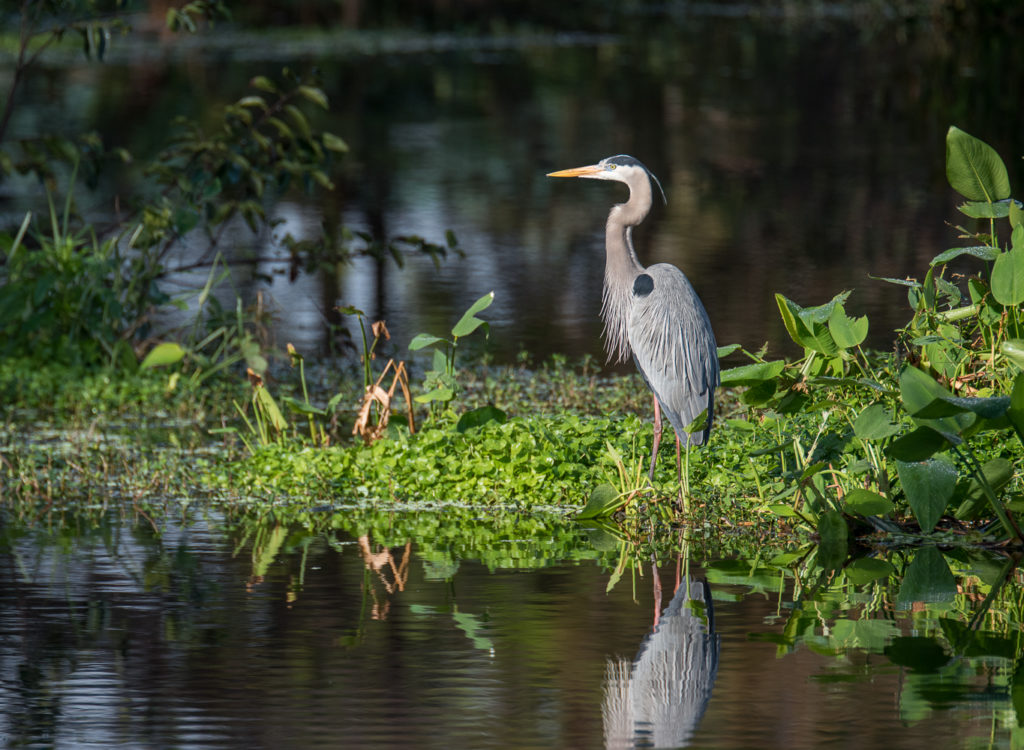
The hatchlings are fed by regurgitation. In about 60 days, they grow into young adults ready to fly. They must, of course, avoid predators during this time: Racoons, Eagles, Hawks and Turkey Vultures.
Nesting Great Blue Herons make magnificent photographic subjects. Their black crowned heads and necks are decorated with breeding plumes. Their pale yellow-green eye and yellow-orange beaks shine in the morning sunlight.

They dip and raise their long necks, ruffle their long plumes and often open their exceptionally large wings while they provide a territorial display for the many other species that usually share their nesting location.
Their flight is slow and deliberate and easy for a novice shooter to grab focus and follow. Back button focus technique and a pin point focus screen set up helps considerably.
When they fish, they spear their prey, then flip them into their mouths, allowing for a many great close-ups–especially with a motor drive and continuous high speed shutter release mode.
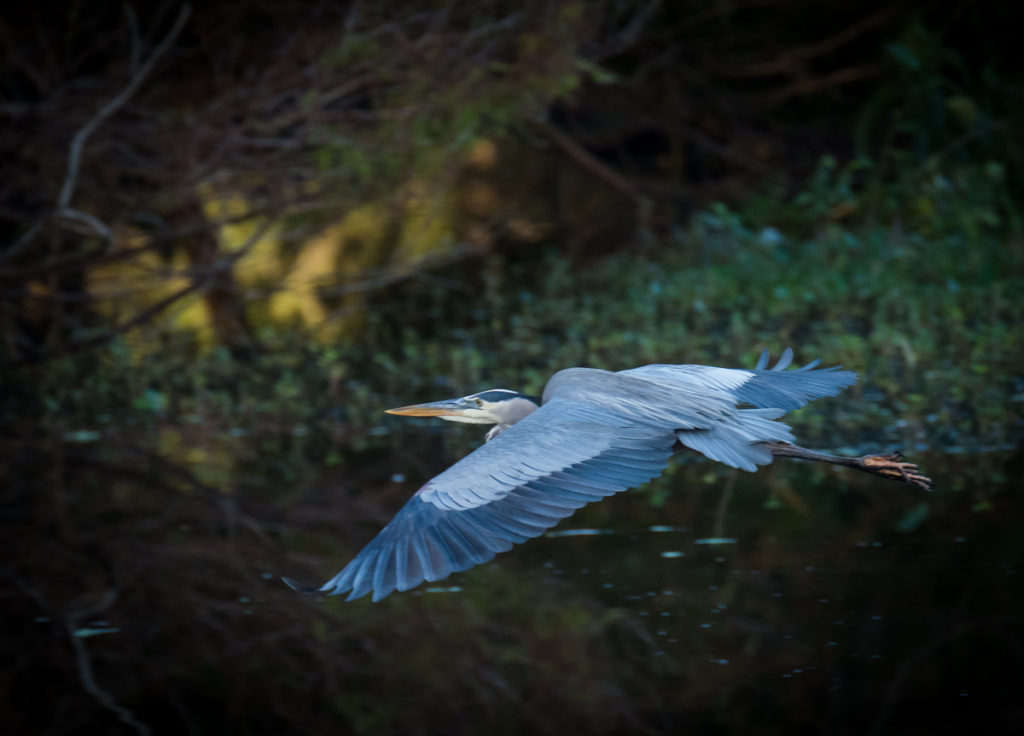
The ideal camera set up: any DSLR or mirrorless camera that allows you to shoot in manual mode and create RAW files. A 36 megapixel camera will create larger files than a 20 megapixel camera. A 300mm to 600mm telephoto lens, will get dramatic close-ups. A monopod will keep your lens steady, while not taking up too much room on boardwalks shared by pedestrians. By dialing in a shallow depth of field—F2.8 to F.6, the photographer can “blur” the many branches and distractions surrounding the subject and nest.
First time bird shooters are never disappointed when pair of Great Blue Herons are found! The best places to shoot Great Blue Herons up close in Palm Beach County include Wakodohatchee Wetland Preserve, and Green Cay Wetland Preserve near Delray Beach. http://discover.pbcgov.org/waterutilities/Pages/Wetlands.aspx
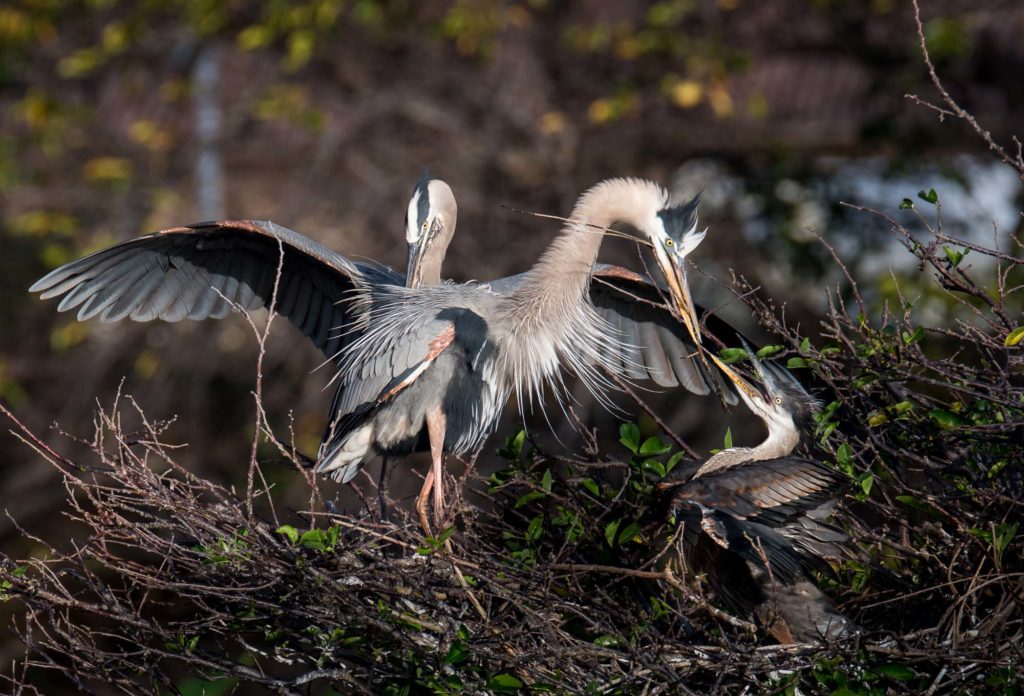

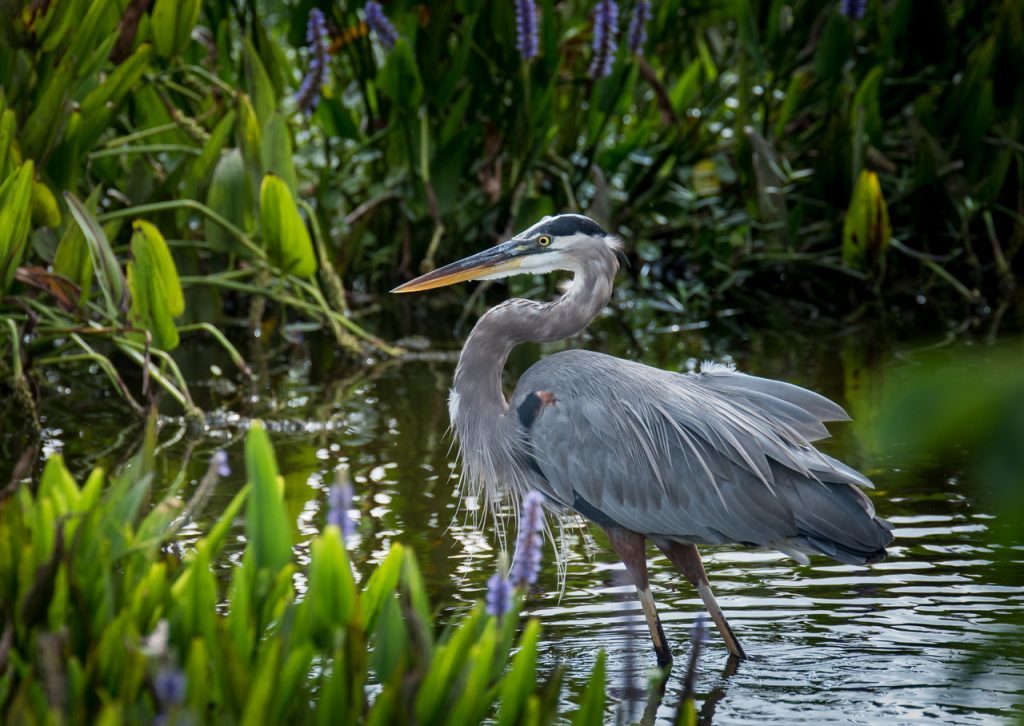
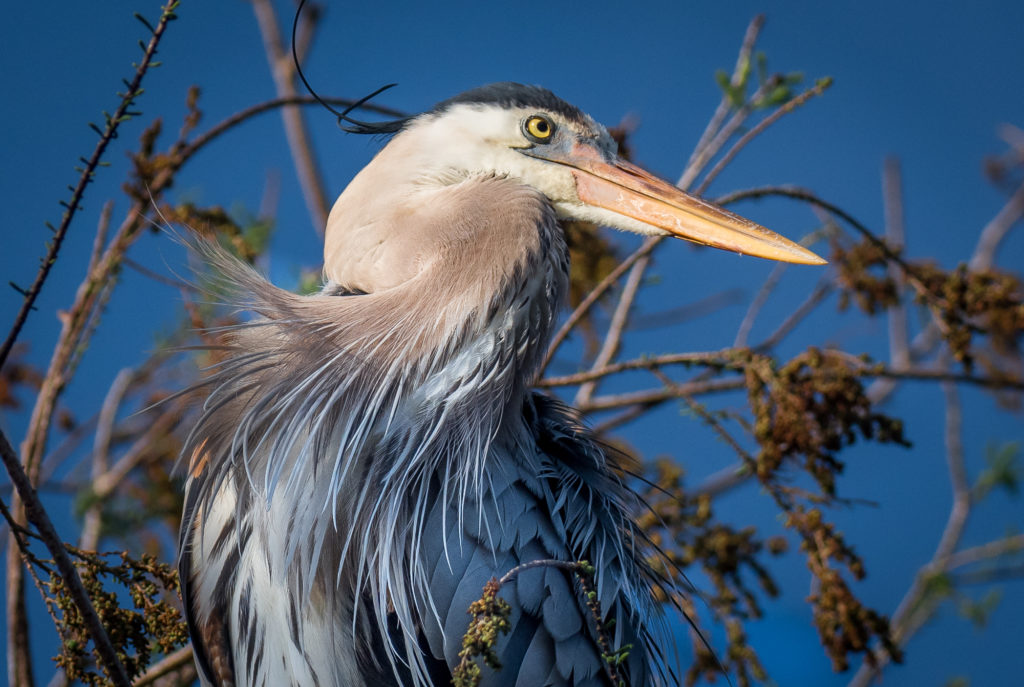
Bob Gibson is the founder of Photo Masters Workshops located in Jupiter, Florida. For more information, email Bob at rjg@rjgibson.com
